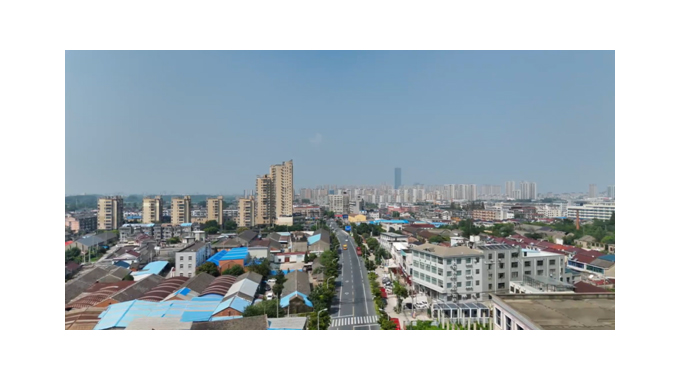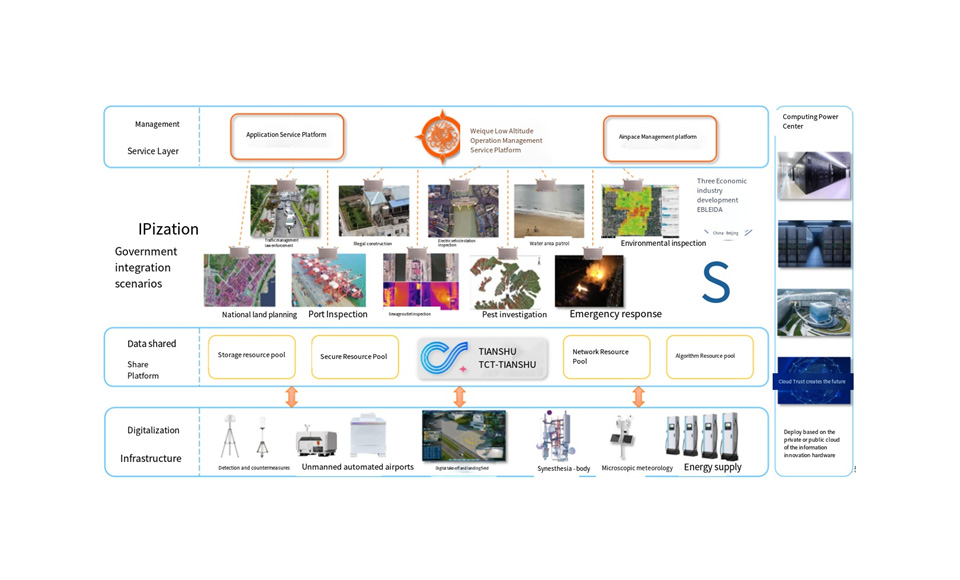■ Based on distributed docks and advanced technologies, the solution builds an air-ground coordinated low-altitude sensing network and creates a government low-altitude UAV service system.
■ The solution establishes an integrated low-altitude application system that providessensing data for the regional digital base, driving the industry and city integration and governance transformation.
■ The deployment of a 3D grid base enables autonomous operations and AI processing, which facilitates early detection and resolution of problems withfull data visualization.
■ The deployment of modular service functions provides targeted comprehensive solutions for multiple departments.
System Components
Cloud platform, DJI Dock 3, Strawberry M350 Dock, Mobile operating unit system, VTOL fixed-wing UAV, tethered UAV, firefighting UAV, loudspeaker, payload dropper, searchlight, full-frame mapping camera, airborne LiDAR, airborne radar flow velocity meter, gas detector, airborne multi-parameter water quality meter, multispectral camera (model, payload, endurance, mount), etc.
Functionality
■ Cost Reduction & Efficiency Gain: In comprehensive urban governance, emergency disaster response time is reduced to within 10 minutes; inspection workload decreases byover 30%; costs lower by over 30%; and efficiency improves 4-6 times.
■ Asset Reactivation: Existing UAVs by government departments are reused via cloud boxes to reduce asset investment and reactivate government fixed assets.
■ Industry Stimulation: The construction and operation of the project foster the entire UAVindustrial chain, including manufacturing, data services, industry applications, etc., creating an industrial multiplier effect.





